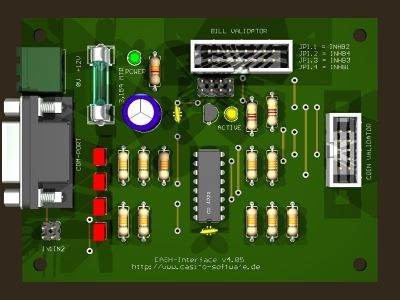

22 = checksum ( sum of all packet bytes is zero ).This is a message from address 1 ( the host ) to peripheral address 2 to find out what it is. 245 = command header ‘Request equipment category id’.Įach peripheral has its own unique DES key. In 2010, DES encryption was added to certain commands so that it could be made more resilient against attacks on the bus. The latter affords the protocol a good deal of popularity in a crowded and highly competitive field similar to open-source software. The protocol supports all standard operations for electronic devices such as flash upgrading of firmware, secure transfer of data and detailed diagnostic information.Īdvantages of ccTalk include low cost UART technology, a simple-to-understand packet structure, an easily expandable command interface and no licensing requirements. Low cost bridge chips are now available from a number of manufacturers to allow ccTalk to run over USB at baud rates of at least 1 Mbit/s.ĬcTalk protocol stacks have been implemented on a range of devices from tiny Microchip microcontrollers with 512 bytes of ROM to powerful ARM7 32-bit processors. The original protocol operated at 4800 baud with subsequent releases standardising on 9600 baud. Each peripheral on the ccTalk bus must have a unique address. peripherals can be connected to a common bus and are logically separated by a device address. It operates at TTL voltages and is ‘multi-drop’ i.e. The main difference is that it uses a single two-way communication data line for half-duplex communication rather than separate transmit and receives lines. The protocol uses an asynchronous transfer of character frames in a similar manner to RS232. The first release of the protocol was in 1996. The protocol was developed at a company called Coin Controls (hence coin-controls-talk, later called Money Controls and from 2010 Crane Payment Solutions) on the outskirts of Manchester in north-west England mainly by Engineer Andrew William Barson. (The other is the Host Intelligent Interface protocol developed by Mars Electronics International). The ccTalk protocol is one of 2 protocols specified by BACTA for use in all AWP machines with serial coin acceptors. Peripherals such as the currency detectors for coins and banknotes found in a diverse range of automatic payment equipment such as transportation, ticketing, payphones, amusement machines, and retail cash management use ccTalk to talk to the host controller. CcTalk (pronounced see-see-talk) is a serial protocol in widespread use throughout the money transaction and point-of-sale industry.


 0 kommentar(er)
0 kommentar(er)
